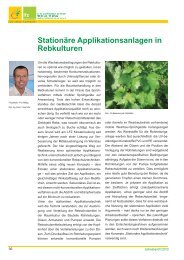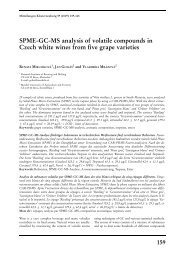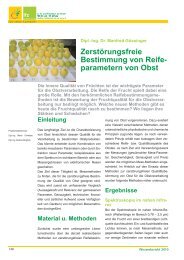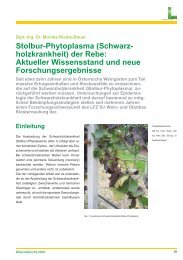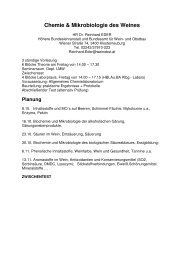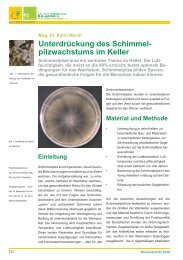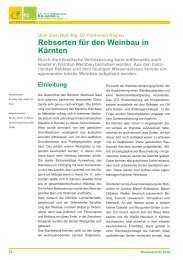Polyphenolic composition of German white wines and its use for the ...
Polyphenolic composition of German white wines and its use for the ...
Polyphenolic composition of German white wines and its use for the ...
Create successful ePaper yourself
Turn your PDF publications into a flip-book with our unique Google optimized e-Paper software.
Mitteilungen Klosterneuburg 57 (2007): 146-152 Pour Nikfardjam et al.<br />
Table 1: Mean (Min-Max) polyphenolic <strong>composition</strong> (mg/l) <strong>of</strong> <strong>German</strong> <strong>wines</strong> (Vintage 1989 - 1998)<br />
In contrast to <strong>the</strong> results <strong>for</strong> 'Riesling' <strong>wines</strong> published<br />
by RITTER et al. (1994), caftaric acid was not <strong>the</strong> dominant<br />
compound in all <strong>wines</strong>. Tyrosol dominated in<br />
'MuÈ ller-Thurgau' <strong>and</strong> 'Silvaner', 3-hydroxybenzoic<br />
acid in 'Rieslaner' <strong>and</strong> p-coumaric acid in 'Traminer',<br />
respectively. These compounds are indicators <strong>for</strong> a rela-<br />
tively oxidative h<strong>and</strong>ling <strong>of</strong> <strong>the</strong> grape material; e.g. tyrosol<br />
is derived from <strong>the</strong> amino acid tyrosine through<br />
oxidative <strong>and</strong> enzymatic processes during vinification<br />
(RITTER, 1994).<br />
The ratio between caftaric <strong>and</strong> coutaric acid showed<br />
large differences between different cultivars as well as<br />
149



